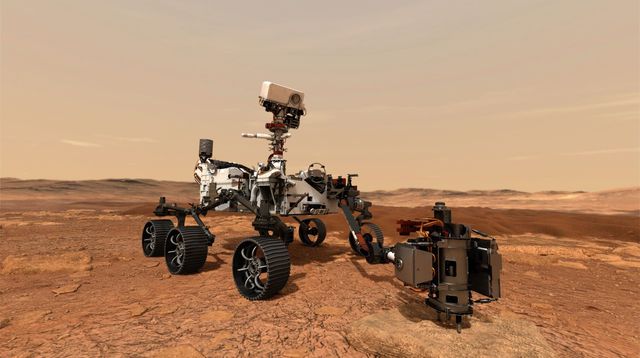Mars: the Perseverance rover makes new discoveries

The Perseverance rover has taken a major step in its search for traces of ancient life on Mars with the collection of the “most valuable” samples so far, containing potential biosignatures that will have to be confirmed once on Earth.
This is not yet proof that life once existed on the red planet, but the best chance yet that one day we will be able to detect with certainty a possible ancient microbial life.
A potential biosignature may have been produced by the presence of life, but also in the absence of life. To consider this biosignature definitive, these samples will have to be analyzed by powerful laboratory instruments on Earth. Nasa plans to report them, through another mission, by 2033. “I think it’s safe to say that these are, and are already, the most valuable rock samples ever collected,” David Shuster, who works on these samples, told a press conference.
Two carrots were taken by drilling into a rock called “Wildcat ridge”, about one meter large and located in a delta formed about 3.5 billion years ago, where a river and an ancient lake meet. This rock is particularly interesting because it is a sedimentary rock, which appears to have formed at the time when the lake water evaporated. “Wildcat ridge” has “a high potential for preserving a biosignature,” said David Shuster of the University of California, Berkeley.
Analyzed separately by an instrument at the end of Perseverance’s robotic arm, the rock revealed the presence of organic compounds – the most abundant detected since the mission began a year and a half ago. These compounds – made especially of carbon, and possibly also containing hydrogen – “are the basic elements of life,” said Ken Farley, in charge of the scientific part of the mission.
They were detected in less quantity by the rover during previous analyzes in the crater of Jézero, which contained the lake, but “as we progress in the delta, the” indices become stronger and stronger,” summarized Sunanda Sharma, a scientist at Nasa’s Jet Propulsion Laboratory. “I personally find these results very moving because it seems we are in the right place, with the right instruments, at a pivotal moment,” she said. “We don’t yet know the importance of these finds, but these rocks are exactly what we came for,” concluded Ken Farley.












